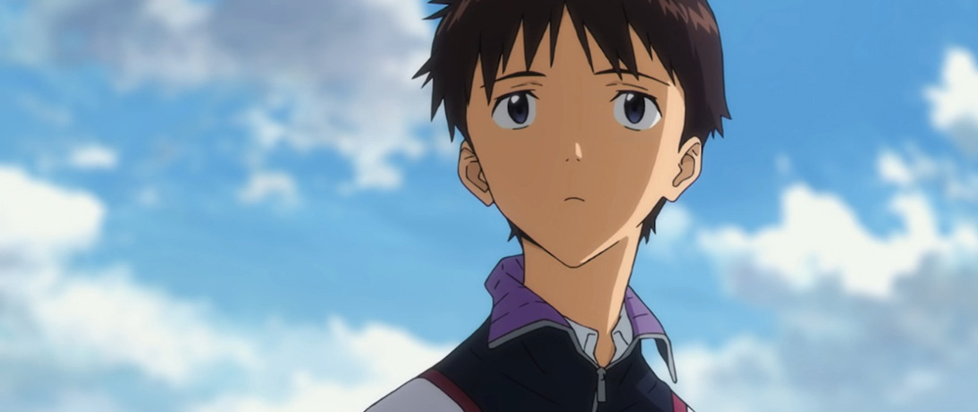
Everything Old is New Again. And Then Some
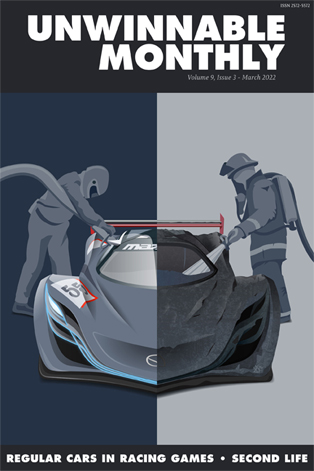
This column is a reprint from Unwinnable Monthly #149. If you like what you see, grab the magazine for less than ten dollars, or subscribe and get all future magazines for half price.
———
Bucking the critical consensus.
———
The remake has evolved. After years of formulaic reboots of once-popular franchises, the format has matured. Or perhaps it’s more accurate to say that it has wised up to its audiences’ exhaustion at the prospect of another retread, instead offering something a bit different: a remake that knows it’s a remake. With this twist, whole new creative and financial possibilities have taken shape.
It’s a trend that’s surfaced in several major releases over the past few years, in some cases more explicitly than in others. Wildly successful franchises across industries – film, videogames, TV, music – have featured titles that draw attention to the fact that they are retelling their own stories, using the remake formula itself to examine what it means to revisit an aging piece of media.
Some of these releases perform a kind of bait and switch, presenting themselves to audiences as standard remakes but gradually revealing their own self-awareness and desire to comment on the whole enterprise. In Final Fantasy 7 Remake, certain characters appear to have knowledge of events that haven’t happened yet (at least, not in this timeline or dimension), and the hand of fate – represented by ghostly apparitions called Whispers – intervenes at critical junctures in the story to ensure that events proceed as originally intended. These revisions to the storyline appear sporadically at first, only hinting at the idea that something fundamentally different is going on. But the narrative eventually embraces these changes fully, and the game’s climax concerns the protagonists challenging fate and forging a new path untethered from the demands of a strictly faithful adaptation. (I wrote about some of the ways the game does this, particularly with its music, in a column last year.)
The Rebuild of Evangelion film series similarly introduces itself as a straightforward update of the original, with the first film (released back in 2007) telling a story nearly identical to the first handful of episodes of the TV series. It closes with a small suggestion of something different on the horizon before the second and third film take the narrative in new directions, eventually departing entirely from the source material.
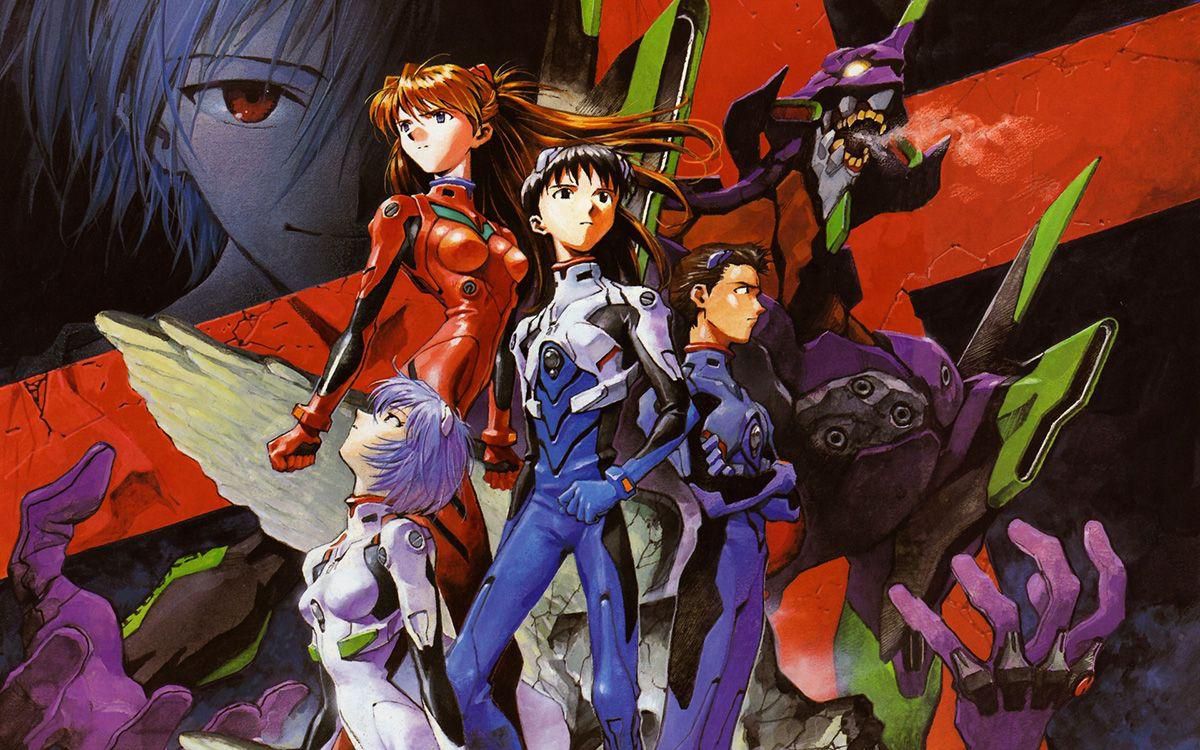
The final film, Evangelion: 3.0+1.0 Thrice Upon a Time, released in 2021, both expands significantly on these new plotlines and returns to ones left over from the 1990s. Maybe the biggest surprise is its confirmation of what was briefly hinted at in the first film: that the Evangelion franchise so far has been cyclical, looping back on itself. Audiences are not just watching a remake of a TV show they may have watched many times before, the characters from the original series have been repeatedly reliving versions of that familiar story. In the Rebuild saga, that cycle is disrupted, and the characters become aware of and break free from this trap.
The TV series was (in)famous for its exploration of depression, isolation and self-destructive patterns of behavior. Throughout its narrative, Thrice Upon a Time seeks to resolve these issues for its characters, its audience and its creator in a more definitive and hopeful fashion than where things left off in 1997’s End of Evangelion.
This comes to a dramatic conclusion in a final, apocalyptic confrontation between protagonist Shinji and his father, Gendo. What begins as a reality-bending giant robot battle turns into a conversation that sees Gendo revealing his painful personal history, interrogating the devastating and abusive decisions he made as a parent, and attempting to better understand his son and mend some of the damage he’s inflicted. Shinji is finally able to grapple with problems he has faced for many cyclical lifetimes, enabling him to close the loop for good. This releases the characters from the destructive cycle they’ve been stuck in and, crucially, allows these kids to literally grow up and move on with their lives.
Beyond all this, Rebuild also comments directly on the continued popularity of the original series and the industry it helped popularize internationally. Series creator Hideaki Anno’s relationship to his work’s fanbase has often been complicated and here he addresses his audience with a familiar message – put crudely: “there’s more to life than watching Evangelion” – now informed less by the indignation and frustration he felt in the ‘90s and more by the insight and compassion gained through a few extra decades of life experience. Like FF7R, Rebuild of Evangelion toes the line between remake and sequel, using expectations around rebooting a franchise to reconsider themes and resolve lingering tensions.
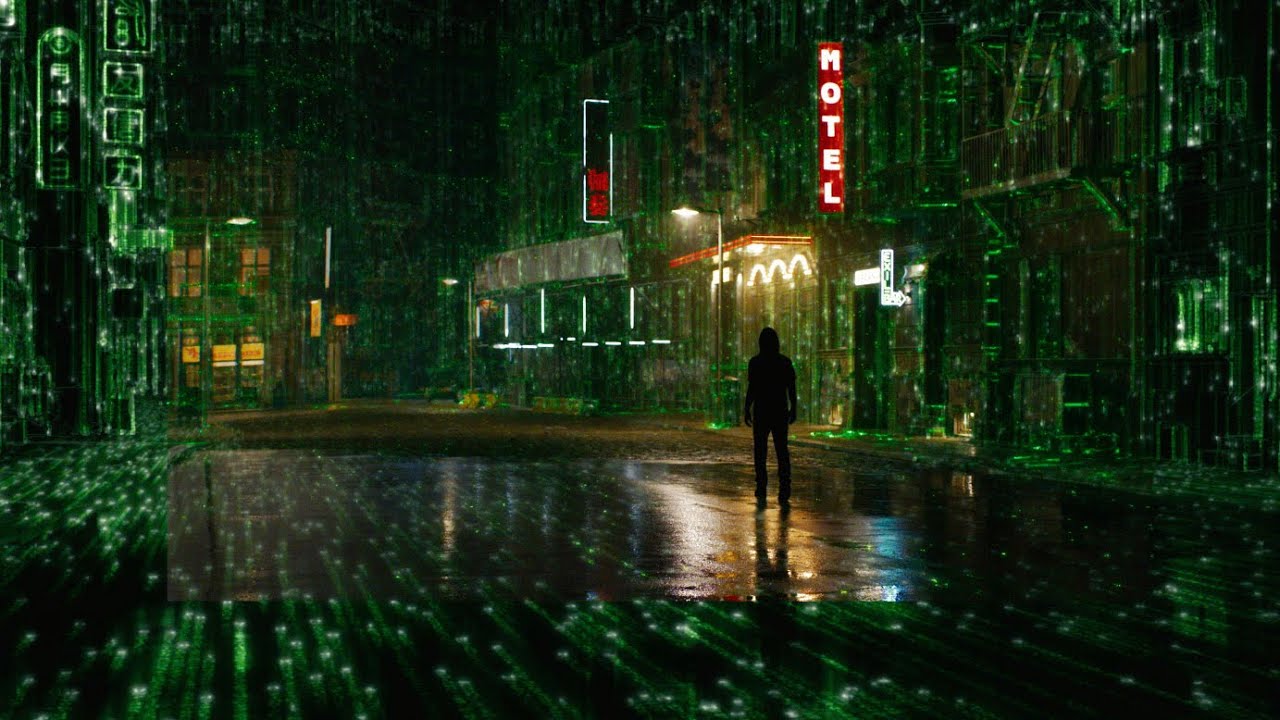
The Matrix Resurrections takes a somewhat different approach in that it’s an unambiguous sequel to the original Matrix trilogy that concluded back in 2003, but it uses the franchise’s setting to explore similar ideas around retelling a narrative. It places protagonists Neo and Trinity in a new version of the Matrix (the computer simulation) in which all their adventures in The Matrix (the real movie franchise) appear as a story told in “The Matrix” (a videogame designed by Neo, now a game developer). Neo finds it increasingly difficult to believe that the story in his game is entirely fictional, feeling instead that he must have lived it somehow, while his therapist urges otherwise and his employer, Warner Bros. (who produced the real film trilogy), demands he help design a fourth entry in the popular series (different from the fourth entry in the film series the audience is watching).
The first chunk of Resurrections uses this premise to consider what it means to revisit The Matrix two decades later for all involved. At times, this is done through over-the-top parody. Elsewhere, the tone is more somber, as Neo grapples with memories of himself as world savior that seem at odds with the older, less self-assured person he sees in the mirror every morning.
Later, though, Resurrections becomes something like a soft reboot of – or perhaps a correction to – the original trilogy’s narrative. It hits some identical plot beats, including Neo awakening from the Matrix, learning (again) about the real world and working alongside Trinity to end the Machines’ domination of humanity. But this time around, the focus shifts away from Neo’s role as the prophesied One, with the film stating that Trinity always played an equally necessary part in Neo’s endeavors to liberate humanity, so the two of them together were the real “One.”
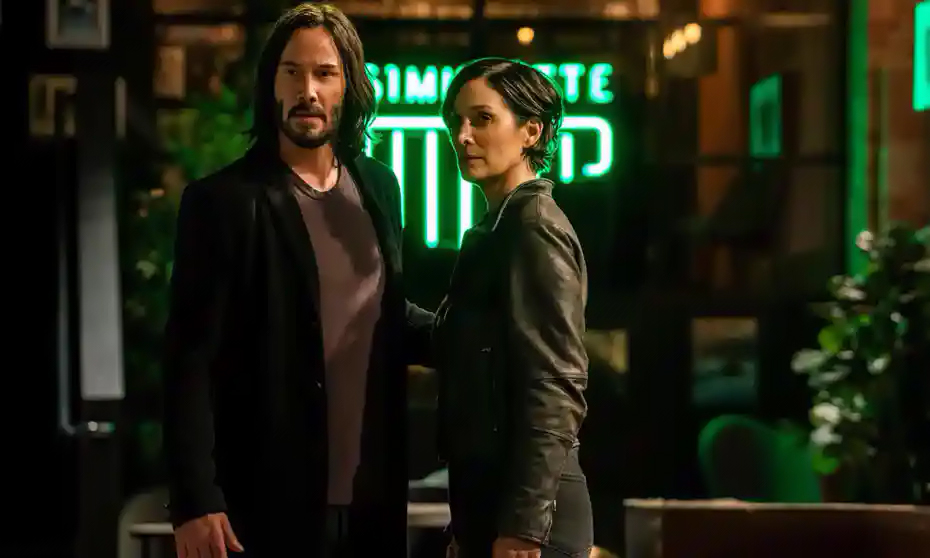
This is an interesting choice because it highlights a theme that is fully present in the original trilogy but stated less directly in the dialog. Neo’s victory in the first film is only possible because Trinity literally brings him back from the dead, and she plays a similarly essential role in the next two films – something that Neo, at least, recognizes. But the in-universe mythmaking never really reflects this, as everyone else continues to revere Neo alone. Resurrections’ approach suggests that director Lana Wachowski felt that this theme was previously under-emphasized and deserved to be underlined so that everyone – both within the Matrix and who is watching The Matrix – understands it better. (Both Resurrections and the Rebuild of Evangelion films incorporate footage pulled straight from their predecessors, making their commentary even more direct.)
The Marvel Cinematic Universe offers a variation on this approach with its recent push to incorporate the multiverse into its storylines. Through this conceit (and thanks to Disney’s acquisition of 21st Century Fox), its recent and upcoming films are able to include characters from the wider Marvel catalog that were previously portrayed on screen but not as part of the MCU, like the X-Men or earlier versions of Spider-Man.
These productions don’t claim to be remakes and don’t include the kind of literal meta commentary the projects mentioned earlier do, but their narrative impact does rely on the assumption that the audience will know this material existed elsewhere before. A film like 2021’s Spider-Man: No Way Home attempts to give its reincarnated heroes and villains the opportunity to resolve old conflicts or demonstrate growth relative to their last appearance years ago.
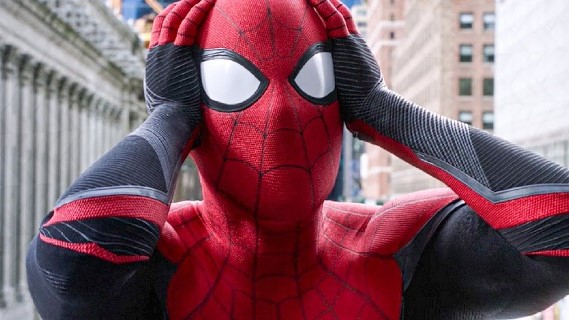
We might even see a similar impulse in some of the nonfictional reunions and rereleases that have made waves recently. These events – like the Friends or Harry Potter reunion specials – often feature the cast returning to the sets they filmed on, discussing their experiences behind the scenes, and reading through old scripts. Taylor Swift’s “Taylor’s Version” re-recordings of her own earlier material might fit somewhere in this category. The list goes on, each offering a supposedly fresh perspective on a popular cultural artifact.
There’s obviously an enormous benefit to the companies creating these evolving franchises: they open up opportunities for renewed revenue in old places. The practice of releasing a more self-aware refresh of an aging franchise certainly feels cynical, but it has the potential to mellow an audience’s skepticism regarding corporate cultural production. By distancing themselves from conventional reboots with their self-reflexive approach, these projects can claim that they have something more meaningful or authentic to offer fans.
And this practice creates possibilities for expanding a franchise beyond anywhere it might have gone before, extending its grip on resources, attention spans, and discussions. Square Enix has an entire sub-series of games in the works to continue retelling the Final Fantasy 7 story, for example. Anno has expressed interest in seeing other directors create new stories in the post-Rebuild of Evangelion canon. Disney’s multiversification of the MCU is set to explode in seemingly infinite directions and media products over the next few years. A reunion special provides a great excuse to rewatch (on a new streaming service or new home video release) an entire series before checking out the latest spin-off. Through these projects, companies seek to guarantee that a franchise remains profitable and prominent in cultural discourse well into the future.
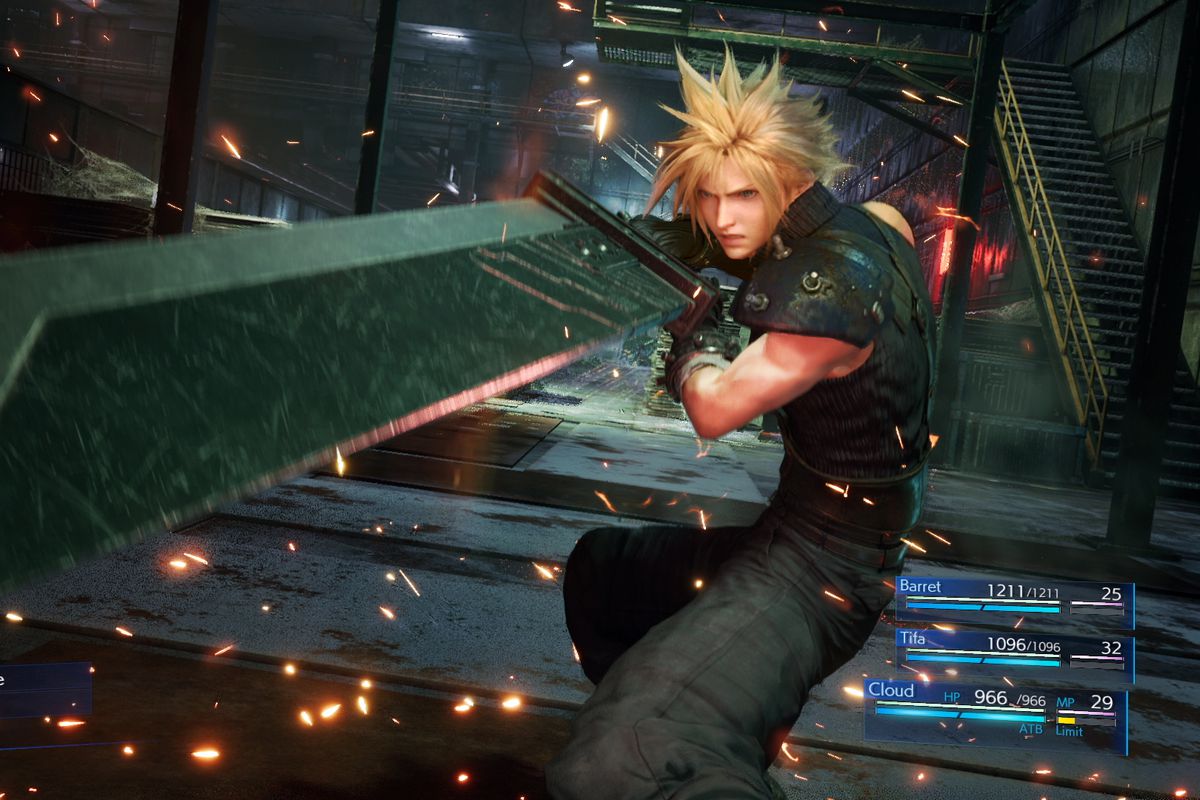
It’s convenient that these explorations of aging, memory and media also lead to explorations of new financial frontiers. And it’s easy to dismiss the products born from this trend. There are very compelling arguments in favor of doing exactly that. But this is partly why connecting with one of these projects can be an unexpectedly uncomfortable (and even moving) experience. It means becoming aware of how personally significant this kind of corporate cultural production may have been to an audience, the meaningful role these works can play in shaping someone’s understanding of themselves during their formative years, how media has helped us mark the chapters of our own lives. Phillip Russell’s excellent piece on Evangelion: 3.0 + 1.0 in Issue 143 looks at how resonant a work like this can be when done right.
Perhaps, then, it’s better to consider these on a case-by-case basis. Some are more introspective, self-critical or ambitious than others. Regardless, even the best of these can still foster an uneasy feeling: the sense that these ever-expanding corporations are curating a collective cultural memory. These revivals suggest that, for a major media company, it is not enough for us to remember their previous works – how we remember these products should be shaped by companies like Disney and Warner Bros., too. How a work ages and how its audience ages with it must be mediated by its financiers.
Whatever the end result, remakes like these are generally in the strange position of both acknowledging the passage of time and refusing it. They’re driven by the recognition that things have changed, but they can only be so transparent about what messages someone ought to take from that. Encouraging an audience to move on to newer things would undermine the effort, so instead they tend to reiterate the importance of what’s familiar. At their best, these reboots and reimaginings can create a space for audiences to reflect on where they’ve been and where they might be going next. But that seems like a high bar to clear. Most of the time, these revivals do not bother to consider whether or not it is better to let some things – even our favorite things – be.
———
Adam Boffa is a writer and musician from New Jersey. You can follow him on Twitter @Ambinate.




